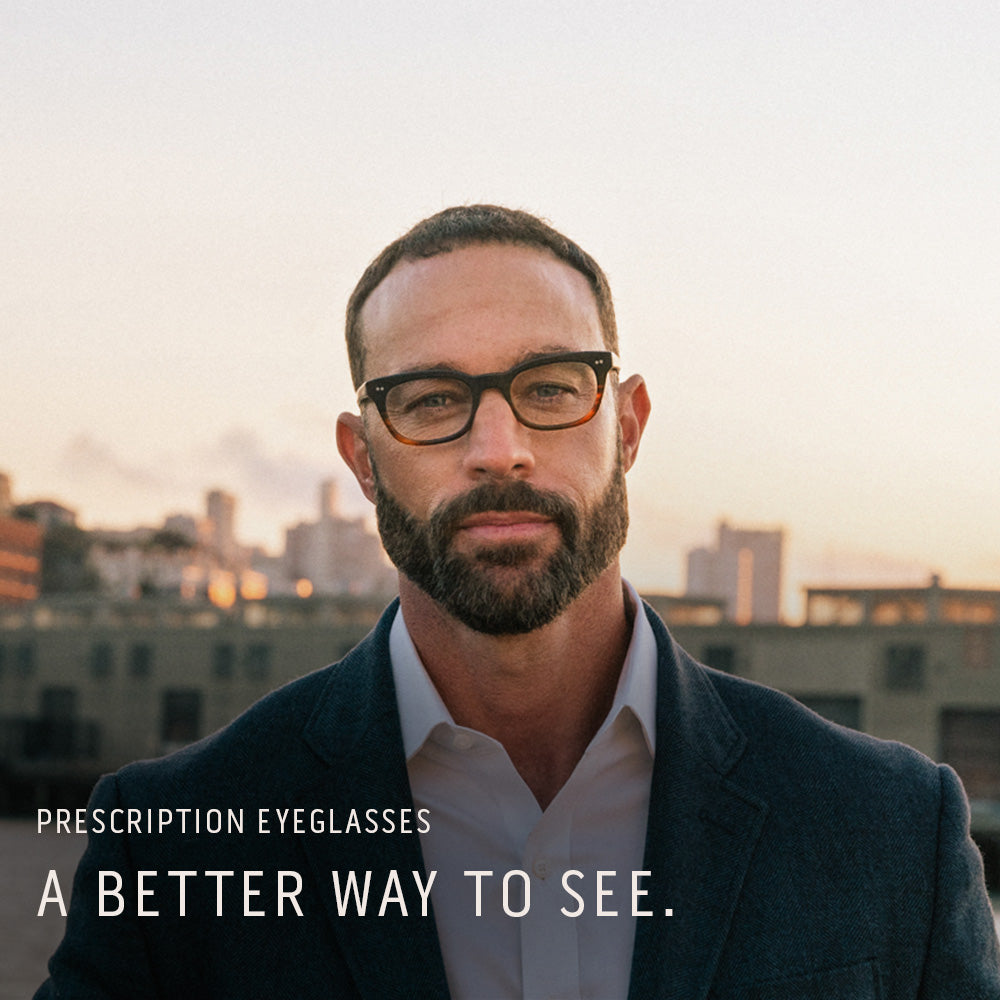Menu
- EV READERS™
Reading Glasses, Reimagined
Mobile Menu
SHOP EV READERS BY BRAND
SHOP EYEGLASSES BY BRAND
SHOP SUNGLASSES BY BRAND
SHOP READING GLASSES BY BRAND

Reading
EXTENDED VISION™ READING GLASSES
Introducing EV Readers: Reading glasses tailor-made to your measurements and designed for the way you need to see.
SINGLE VISION READING GLASSES
Handmade frames in styles by Raen, STATE Optical and L&F paired with custom-made single vision reading lenses.
EXTENDED VISION™ READING GLASSES
Introducing EV Readers: Reading glasses tailor-made to your measurements and designed for the way you need to see.

SINGLE VISION READING GLASSES
Handmade frames in styles by Raen, STATE Optical and L&F paired with custom-made single vision reading lenses.

Prescription
LENSES
Now you can get custom-made lenses with premium coatings mounted into your own favorite frames. Enjoy a better reading glass experience with our collection of Extended Vision™ Reading Lenses. Or give your favorite prescription glasses a second life with our premium Rx Replacement Lenses.
Now you can get custom-made lenses with premium coatings mounted into your own favorite frames. Enjoy a better reading glass experience with our collection of Extended Vision™ Reading Lenses. Or give your favorite prescription glasses a second life with our premium Rx Replacement Lenses.

SHOP REPLACEMENT LENSES

SHOP OMBRAZ LENSES

SHOP EXTENDED VISION™ READING LENSES

Single Vision or Progressive Glasses? How to read your Eyeglasses Prescription
Over the years since we started L&F, we've been asked the same question over and over:
"Do I need single-vision or progressive glasses?"
Most times, your eye doctor will have told you which type of glasses you should be wearing for your vision needs. But often, our customers just have their prescription, or script, which has a bunch of odd looking industry terms and confusing numbers that make little sense to most.
Let’s start by demystifying the eyewear industry jargon so you can be sure you’re getting what you need – and what you want – in your next pair of Rx lenses.
Prescription lenses are custom-made to your specific vision numbers indicated on your Rx script.
The first three columns of information fall under the headings:
- SPHERE
- CYLINDER
- AXIS
These numbers show the power correction to bring your vision into clear focus for single focal distance – typically these show your power correction for clear vision into the distance.
PRESCRIPTION FOR SINGLE VISION GLASSES
A single focal distance indicated on your Rx Script means that you need Single Vision lenses.
Below is an example of a prescription for someone who likely needs Single Vision glasses. Note that there is nothing in the ADD column.
|
SPHERE |
CYLINDER |
AXIS |
ADD |
|
|
R |
-1.25 |
-0.75 |
128 |
|
|
L |
-1.75 |
-0.25 |
164 |
|
Next, let's take a look at what a prescription looks like for progressive glasses.
PRESCRIPTION FOR PROGRESSIVE GLASSES
Look at your prescription and see if there are any numbers in the column titled ADD POWERor, simply, ADD.
Your Add Power is the magnification power you need to help you focus up close for reading. For example, if you wear reading glasses, your Add Power is the magnification power that you need for your reading glasses or specialty Extended Vision™ Reading Glasses exclusively from Lens & Frame Co.
If your Rx Script indicates an Add Power, then you are a candidate for multi-focal Rx Progressive lenses.
Progressive lenses, also known as “no-line bifocals”, are lenses with different focal zones that will help you see clearly into the distance AND help you focus up close for reading.
The name “Progressive” is derived from the unique lens design that progressively adds magnification power toward the bottom part of the lens to help you read more easily.
An engineering revolution in the optical industry (yes, we get excited by this kind of stuff) progressive lenses allowed us to get away from the old “lined bifocal” that your grandparents probably used to wear. Bifocals were basically tiny magnifying glasses glued onto the bottom of your prescription lenses.
Below is an example of a prescription for someone who needs progressive glasses.
|
SPHERE |
CYLINDER |
AXIS |
ADD |
|
|
R |
-1.25 |
-0.75 |
128 |
+2.00 |
|
L |
-1.75 |
-0.25 |
164 |
+2.00 |
So let’s summarize …
Consider Rx Single Vision glasses if:
- You don’t wear reading glasses.
- Your Rx Script does not indicate an ADD Power.
- You do wear reading glasses, BUT YOU DO NOT want your prescription lenses to have any reading power magnification. You only want Distance Vision correction.
Consider Rx Progressive glasses if:
- You wear reading glasses AND YOU WANT multi-focal prescription lenses to help you focus into the distance AND up close for reading.
- Your Rx Script indicates an ADD Power AND YOU WANT to be able to see clearly into the distance and focus on your phone to read text messages.
And consider Extended Vision™ Reading Glasses if you have an ADD power and spend long periods of time working at your desk. Our Extended Vision reading glasses seamlessly transition your clear focus from glancing down to read text messages on your phone, looking up to work on your computer, and even engaging with your friends/colleagues across the table.
We hope that this helps to decode your eyeglasses prescription and figure out whether you need single vision or progressive glasses. Learn more about progressive lenses and how they work.
Also in Eyewear Explainers

How to Choose the Right Extended Vision Reader
If you’ve ever wondered why your reading glasses work great for your phone but fall apart when you look at your computer screen—or why your progressives feel awkward at your desk—you’re not alone. As our days bounce between screens, documents, and the spaces around us, one pair of “reading glasses” isn’t always enough.

A Different Way To Reader
Disappointed with cheap reading glasses that can't focus clearly between your phone and your computer screen? Expect more from your reading glasses when you step up to Extended Vision readers by Lens & Frame Co. with lenses that are custom-made to your measurements using the same lens designs and multi-layer anti-reflection coatings as top-shelf Rx Computer Progressives.

What are progressive glasses, who needs them and how do they help people see more clearly
Save 15% today
Join the L&F Insider mailing list and get 15% off your order.*
* Valid for orders over $100
Let the savings begin!
LANDF-XXXXXX
Use CodeClick the button above to automatically apply your discount code to your order.







